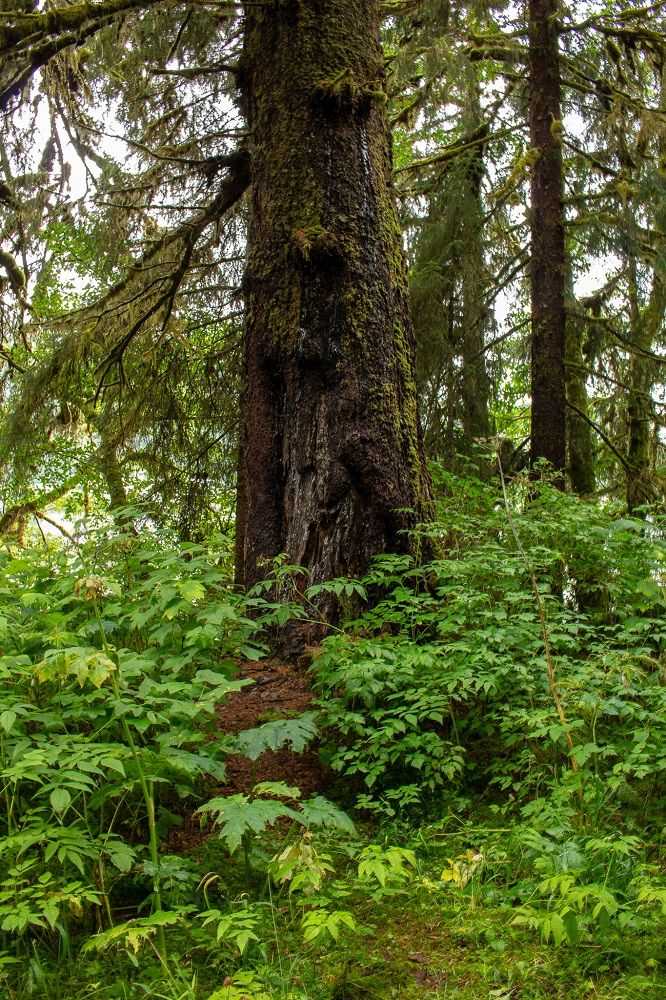This morning in the misty fjords of Alaska began with a cruise to Sitkoh Bay, a place of history and many, many barnacles. In the early 1800s the inhabitants of Sitka were forced to flee their homes and take up residence there to escape an attack by the Russian navy captain Alexander Andreyevich Baranov. Today, other signs of human occupation are evident including a logging road that doubles as a walking trail. Along the trail visitors were able to get up close to several massive Sitka spruces, one showing definite signs of abrading from bears. Consequently, bears will deposit their scent that serve as a message, often a territorial warning, for other bears and other animals. Around the tree, perennial footprints showed not only the frequency with which this tree is visited by this particular bear but the routine in which it makes its approach. In and amongst wildflowers, understory plants like baneberry and cow parsnip (a common skin irritating allergen) were several piles of bear scat. Scat can provide a lot of information regarding what an animal forages on, and this particular bear was eating mostly if not all plant material. Visitors on longer walks were able to see springboard notches, a vestige of earlier forestry practices. Springboards are horizontal grooves cut into the tree and fitted with narrow standing platforms that allowed the loggers to cut a tree from the top in sections.
Outside of those who chose to walk, groups of intertidal explorers were able to spot a large amount of diversity on the shore and near waters of this rocky bay. Gunnel fish were tucked into wet corners, surviving on tiny pools of leftover water until the tide returns and sea stars littered the rocks. Our Global Explorers tried their hand at piloting the underwater ROV, which turned up some interesting footage, including a sunflower sea star. With 26 arms it is the largest sea star on earth. It moves 40 inches an hour and voraciously consumes other sea life – including sea stars. In addition to those exploring the forest and shoreline, a group took the water and cruised the bay on stand-up paddleboards or kayaks.
Back on board, we headed to Chatham Strait with the hope to spot more humpbacks and maybe even see them bubble netting. This uncommon method for catching fish is used by only a small percentage of the global humpback population and is only employed specifically to catch herring. In order to bubble net, one member of the group will create a circular stream of bubbles while another member creates a sound that drives the herring upwards. This circle of bubbles traps the herring, and the whales explode through the surface, mouths open, consuming the fish. Like so many times on this trip, nature did not disappoint, and we were treated to seven whales bubble netting close to the ship six times. An eighth whale broke away from the group and breached, coming about two-thirds of the way out of the water. It was a spectacular scene, and one our guests will remember for a lifetime.
Our afternoon concluded with a refreshing dip in the ocean. Four Zodiacs packed with brave (if not foolhardy) souls jumped into frigid Alaskan waters while onlookers cheered them on from the bow. All in all, it was another day of adventure and beauty in majestic Southeast Alaska.







